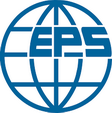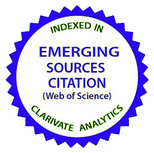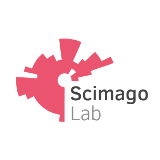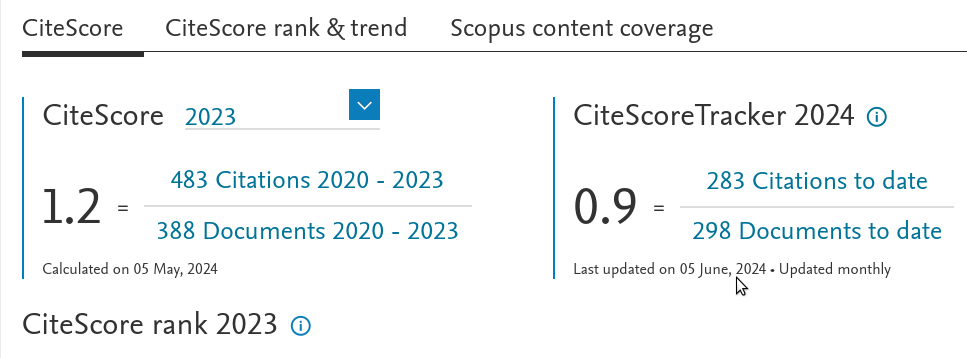Theoretical Model for Negative Differential Conductance in 2D Semiconductor Monolayers
DOI:
https://doi.org/10.15407/ujpe63.6.527Keywords:
differential conductance, semiconductor monolayers of the MoS2 andWS2 typesAbstract
A simple theoretical model of electron heating in a system with two valleys is applied for the first time to describe 2D semiconductor monolayers of the MoS2 and WS2 types. The model is demonstrated to describe sufficiently well the available experimental data on the negative differential conductance effect in a WS2 monolayer. It confirms a possibility to fabricate Gunn diodes of a new generation based on the structures concerned. Such diodes are capable of generating frequencies of an order of 10 GHz and higher, which makes them attractive for many practical applications.
References
<li>S. Das Sarma, S. Adam, E.H. Hwang, E. Rossi. Electronic transport in two-dimensional graphene. Rev. Mod. Phys. 83, 407 (2011).
<a href="https://doi.org/10.1103/RevModPhys.83.407">https://doi.org/10.1103/RevModPhys.83.407</a>
</li>
<li>V.G. Lytovchenko, M.V. Strikha, M.I. Klyui. Modified graphene-like films as a new class of semiconductors with a variable energy gap. Ukr. Fiz. Zh. 56, 178 (2011) (in Ukrainian).
</li>
<li>P. Miro, M. Audiffred, T. Heine. An atlas of two-dimensional materials. Chem. Soc. Rev. 43, 6537 (2014).
<a href="https://doi.org/10.1039/C4CS00102H">https://doi.org/10.1039/C4CS00102H</a>
</li>
<li>Xinming Li, Li Tao, Zefeng Chen, Hui Fang, Xuesong Li, Xinrang Wan, Jian-Bin Xu, Hongwei Zhu. Graphene and related two-dimensional materials: Structure-property relationship for electronics and optoelectronics. Appl. Phys. Rev. 4, 021306 (2017).
<a href="https://doi.org/10.1063/1.4983646">https://doi.org/10.1063/1.4983646</a>
</li>
<li>O.V. Yazyev, A. Kis. MoS2 and semiconductors in the flatland. Materials Today 18, 20 (2015).
<a href="https://doi.org/10.1016/j.mattod.2014.07.005">https://doi.org/10.1016/j.mattod.2014.07.005</a>
</li>
<li>S.M. Sze. Physical Devices in Semiconductors (Wiley, 1981).
</li>
<li>Negative Differential Resistance and Instabilities in 2- D Semiconductors. Edited by N. Balkan, B.K. Ridley, A.J. Vickers (Plenum Press, 1993).
<a href="https://doi.org/10.1007/978-1-4615-2822-7">https://doi.org/10.1007/978-1-4615-2822-7</a>
</li>
<li>Jaewoo Shim, Seyong Oh, Dong-Ho Kang, Seo-Hyeon Jo, M.H. Ali, Woo-Young Choi, Keun Heo, Jaeho Jeon, Sungjoo Leem Minwoo Kim, Young Jae Song, Jin-Hong Park. Phosphorene/rhenium disulfide heterojunction-based negative differential resistance device for multi-valued logic. Nature Commun. 7, 13413 (2016).
<a href="https://doi.org/10.1038/ncomms13413">https://doi.org/10.1038/ncomms13413</a>
</li>
<li>Y. Zhao, Z. Wan, U. Hetmaniuk, N.P. Anantram. Negative differenial resistance in graphene boron nitride heterostructure controlled by twist and phonon-scattering [ArXiv: 1702.04435 (2017)].
</li>
<li> G. He, J. Nathawat, C.-P. Kwan, H. Ramamoorthy, R. Somphonsane, M. Zhao, K. Gosh, U. Singisetti, N. Perea-Lopez, C. Zhou, A.L. Elias, M. Terrones, Y. Terrones, Y. Gong, X. Zhang, R. Vajtai, P.M. Ajayan, D.K. Ferry, J.P. Bird. Negative differential conductance and hot-carrier avalanching in monolayer WS2 FETs. Sci. Rep. 7, 11256 (2017).
<a href="https://doi.org/10.1038/s41598-017-11647-6">https://doi.org/10.1038/s41598-017-11647-6</a>
</li>
<li> V. Lytovchenko, A. Kurchak, M. Strikha. The semi-empirical tight-binding model for carbon allotropes "between diamond and graphite". J. Appl. Phys. 115, 243705 (2014).
<a href="https://doi.org/10.1063/1.4885060">https://doi.org/10.1063/1.4885060</a></li>
Downloads
Published
How to Cite
Issue
Section
License
Copyright Agreement
License to Publish the Paper
Kyiv, Ukraine
The corresponding author and the co-authors (hereon referred to as the Author(s)) of the paper being submitted to the Ukrainian Journal of Physics (hereon referred to as the Paper) from one side and the Bogolyubov Institute for Theoretical Physics, National Academy of Sciences of Ukraine, represented by its Director (hereon referred to as the Publisher) from the other side have come to the following Agreement:
1. Subject of the Agreement.
The Author(s) grant(s) the Publisher the free non-exclusive right to use the Paper (of scientific, technical, or any other content) according to the terms and conditions defined by this Agreement.
2. The ways of using the Paper.
2.1. The Author(s) grant(s) the Publisher the right to use the Paper as follows.
2.1.1. To publish the Paper in the Ukrainian Journal of Physics (hereon referred to as the Journal) in original language and translated into English (the copy of the Paper approved by the Author(s) and the Publisher and accepted for publication is a constitutive part of this License Agreement).
2.1.2. To edit, adapt, and correct the Paper by approval of the Author(s).
2.1.3. To translate the Paper in the case when the Paper is written in a language different from that adopted in the Journal.
2.2. If the Author(s) has(ve) an intent to use the Paper in any other way, e.g., to publish the translated version of the Paper (except for the case defined by Section 2.1.3 of this Agreement), to post the full Paper or any its part on the web, to publish the Paper in any other editions, to include the Paper or any its part in other collections, anthologies, encyclopaedias, etc., the Author(s) should get a written permission from the Publisher.
3. License territory.
The Author(s) grant(s) the Publisher the right to use the Paper as regulated by sections 2.1.1–2.1.3 of this Agreement on the territory of Ukraine and to distribute the Paper as indispensable part of the Journal on the territory of Ukraine and other countries by means of subscription, sales, and free transfer to a third party.
4. Duration.
4.1. This Agreement is valid starting from the date of signature and acts for the entire period of the existence of the Journal.
5. Loyalty.
5.1. The Author(s) warrant(s) the Publisher that:
– he/she is the true author (co-author) of the Paper;
– copyright on the Paper was not transferred to any other party;
– the Paper has never been published before and will not be published in any other media before it is published by the Publisher (see also section 2.2);
– the Author(s) do(es) not violate any intellectual property right of other parties. If the Paper includes some materials of other parties, except for citations whose length is regulated by the scientific, informational, or critical character of the Paper, the use of such materials is in compliance with the regulations of the international law and the law of Ukraine.
6. Requisites and signatures of the Parties.
Publisher: Bogolyubov Institute for Theoretical Physics, National Academy of Sciences of Ukraine.
Address: Ukraine, Kyiv, Metrolohichna Str. 14-b.
Author: Electronic signature on behalf and with endorsement of all co-authors.

















